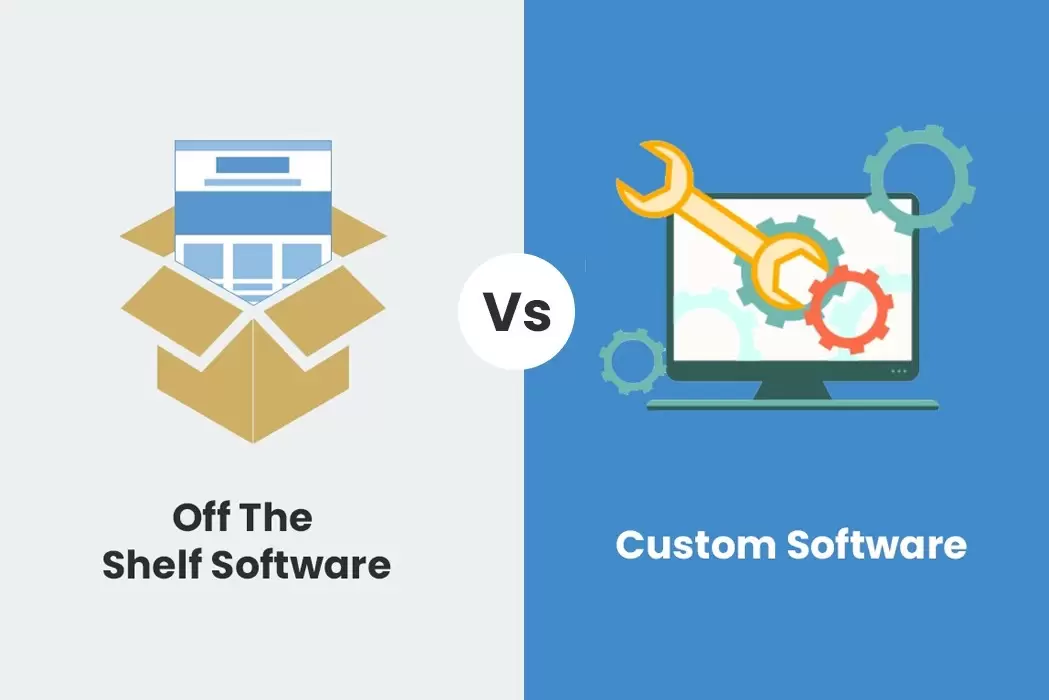
Custom Web Apps vs. Off-the-Shelf Tools: The Ultimate Comparison for Businesses
In today’s digital landscape, businesses face a crucial decision when it comes to selecting software solutions: whether to invest in custom web applications tailored to their specific needs or to opt for off-the-shelf solutions that are readily available and often more cost-effective. This decision can impact many aspects of business operations, from efficiency and scalability to cost and user satisfaction. As companies increasingly rely on technology to automate processes, improve customer interactions, and stay competitive, the right choice between custom and off-the-shelf solutions becomes critical.
Understanding Custom Web Applications
A custom web application is software that is specifically designed and developed to meet the unique needs of a business or organization. Custom web applications are built from scratch or adapted from existing platforms and can be fully customized in terms of functionality, design, user experience, and integrations.
How Custom Web Applications Work
Custom applications are typically created by a team of developers who work closely with the business to understand its specific requirements, workflows, and goals. These developers then design, develop, test, and deploy a solution that is tailored to the business’s needs. Once built, custom applications can be further refined and enhanced as the business evolves.
Understanding Off-the-Shelf Solutions
Off-the-shelf solutions are pre-built software applications that are mass-produced and designed to meet the general needs of a wide range of users. These solutions can be purchased or subscribed to and are typically ready for immediate use with minimal customization.
How Off-the-Shelf Solutions Work
Off-the-shelf applications are designed to be flexible enough to serve multiple businesses and industries with common requirements. While these solutions may offer some level of customization (such as templates or adjustable settings), they cannot be altered at their core to fit a business’s unique needs. Companies usually pay a one-time fee or subscription for the software, and support and updates are often provided by the software vendor.
Key Differences Between Custom Web Applications and Off-the-Shelf Solutions
1. Customization
- Custom Web Applications: Built to match the exact specifications of a business, custom web applications offer unparalleled flexibility. The business has control over the features, interface, and user experience. This level of customization ensures that the application aligns perfectly with the company's operational needs and branding.
- Off-the-Shelf Solutions: Pre-built solutions offer limited customization. While some may allow users to change the look and feel or add plugins, the core functionality is predetermined by the software provider. This lack of flexibility can lead to challenges in adapting the software to specific workflows.
- Custom Web Applications: Developing a custom application can be expensive, especially upfront. Businesses must account for the cost of hiring developers, testing, deployment, and ongoing maintenance. However, the long-term cost may be lower if the software reduces inefficiencies or boosts revenue.
- Off-the-Shelf Solutions: These solutions are typically more affordable upfront, with a one-time purchase price or a subscription fee. However, additional costs may arise if the business needs to integrate third-party tools or pay for premium features.
- Custom Web Applications: Developing a custom application can take weeks or even months, depending on the complexity of the project. The process involves multiple stages, including research, design, development, testing, and deployment.
- Off-the-Shelf Solutions: These solutions are usually ready for use immediately or within a short period after configuration. This makes them ideal for businesses that need a quick solution or do not have the time to invest in long development cycles.
- Custom Web Applications: Custom applications are typically built with the business’s growth in mind. They can be scaled to accommodate increasing users, new features, and complex integrations as the company grows.
- Off-the-Shelf Solutions: While some off-the-shelf solutions offer scalability, they are often limited by the framework and infrastructure on which they are built. As a business grows, the software may struggle to handle more users, transactions, or data, leading to performance issues.
- Custom Web Applications: Maintenance and support for custom applications are usually provided by the development team or a dedicated IT department. This can be an advantage because the team has a deep understanding of the application and can quickly address issues. However, businesses must bear the cost of ongoing maintenance and updates.
- Off-the-Shelf Solutions: The vendor of the software typically handles updates, patches, and support. While this can reduce the burden on the business, it also means relying on the vendor for timely updates and bug fixes. Additionally, customer support may be slower or less effective, especially for larger software providers with many users.
Pros and Cons of Custom Web Applications
Pros:
- Tailored to Business Needs: A custom web application can be built to meet the specific workflows, processes, and goals of a business.
- Scalability: Custom applications can grow with your business, allowing for the addition of new features and functionality over time.
- Competitive Advantage: A unique application that is designed around your business can give you a competitive edge by providing features and capabilities that your competitors may not have.
- Integration: A custom application can be designed to integrate seamlessly with your existing systems and third-party tools, ensuring efficiency.
- Control: You have full control over the application, from features and design to security and updates.
- Long-Term Cost Efficiency: While the upfront cost may be higher, custom applications can save money in the long run by eliminating the need for workarounds, plugins, or ongoing licensing fees.
- High Initial Cost: The development of custom web applications requires a significant upfront investment.
- Longer Development Time: Building a custom application from scratch can take weeks or months, depending on its complexity.
- Ongoing Maintenance: The responsibility for maintaining and updating the software often falls on the business, which can lead to additional costs.
- Risk of Developer Dependency: If your in-house development team or hired developers leave or are unavailable, maintaining and updating the software may become difficult.
Pros and Cons of Off-the-Shelf Solutions
Pros:
- Lower Initial Cost: Off-the-shelf solutions are typically less expensive than custom-built applications, especially when it comes to upfront costs.
- Faster Deployment: Since off-the-shelf applications are pre-built, they can be deployed quickly with minimal configuration.
- Vendor Support: Most off-the-shelf solutions come with customer support and regular updates, reducing the need for internal IT resources.
- Proven Reliability: Many off-the-shelf solutions are used by thousands of businesses, meaning they have been tested and refined to handle common business needs.
- Limited Customization: Off-the-shelf solutions offer limited customization, which may require a business to adapt its processes to fit the software rather than the other way around.
- Scalability Limitations: While some off-the-shelf solutions are scalable, many are not built to handle the unique growth patterns of individual businesses.
- Integration Challenges: These solutions may not integrate easily with other systems, requiring the use of additional tools or plugins.
- Ongoing Costs: While the upfront cost may be lower, off-the-shelf solutions often come with ongoing subscription fees, costs for premium features, or additional user licenses.
- Vendor Dependency: The business is reliant on the software vendor for updates, support, and bug fixes. If the vendor discontinues support for the software, the business may be forced to switch solutions.
When Should You Choose a Custom Web Application?
1. Unique Business Processes: If your business has unique workflows or requirements that are not easily met by generic software, a custom web application is likely the best choice. Custom development allows you to build exactly what you need without compromise.
2. Scalability is a Priority: For businesses expecting significant growth or needing to scale their operations quickly, custom web applications provide the flexibility to add features and handle increased demand without performance issues.
3. Competitive Advantage: When a business relies on technology to differentiate itself from competitors, a custom solution can provide a distinct advantage. Whether through enhanced functionality, improved user experience, or proprietary features, custom applications allow businesses to stand out.
4. Complex Integrations: If your business relies on multiple software systems and needs them to work together seamlessly, a custom application can be designed with integration in mind. This ensures smooth workflows and minimizes inefficiencies caused by siloed systems.
When Should You Choose an Off-the-Shelf Solution?
1. Budget Constraints: If your business has a limited budget and cannot afford the upfront investment required for custom development, an off-the-shelf solution may be a better fit. Many off-the-shelf solutions offer affordable pricing models, such as monthly subscriptions.
2. Immediate Need: If you need a software solution up and running quickly, an off-the-shelf application is the way to go. These solutions are typically ready for use immediately or within a short time after configuration.
3. Standard Business Processes: If your business processes are similar to those of other businesses in your industry, an off-the-shelf solution may meet your needs. Many of these applications are designed to handle common business functions such as accounting, customer relationship management (CRM), and inventory management.
4. Limited Internal Resources: For businesses without the in-house expertise to develop or maintain a custom application, off-the-shelf software provides the benefit of vendor support, reducing the need for internal IT staff.
Conclusion: Which Is Best for Your Business?
The decision between custom web applications and off-the-shelf solutions ultimately depends on your business's unique needs, goals, and resources. Custom web applications offer unparalleled flexibility, scalability, and control, making them ideal for businesses with specific requirements, complex integrations, or a need for a competitive edge. However, they come with higher upfront costs and longer development times.
On the other hand, off-the-shelf solutions are more affordable upfront, faster to deploy, and come with built-in support, making them a practical choice for businesses with limited budgets or standard workflows. However, they may lack the customization and scalability that growing businesses need. To make the best decision, businesses should carefully evaluate their current needs, future growth plans, budget, and internal resources. In some cases, a hybrid approach may be ideal, where an off-the-shelf solution is used initially, and a custom application is developed as the business scales.
Both custom web applications and off-the-shelf solutions have their place in the business world, and understanding the trade-offs of each can help ensure you make the right choice for your organization.

Leave a Comment